PERFECTING FORMS AND DEVELOPING FORCE
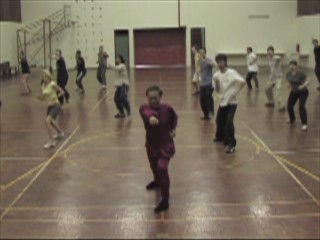
With appropriate breath control taught by Grandmaster Wong, participants perform a whole kungfu set with force and speed but without feeling rired or panting for breath!
For the sake of better understanding, kungfu may be classified into four aspects:
- Form
- Force
- Application
- Philosophy
Due to various reasons, most kungfu practitioners today focus only on forms, neglecting the other aspects. In Shaolin Wahnam we pay attention to all the four aspects of kungfu.
Having spent some time on combat application in the previous video series, this series focuses on attaining picture-perfect forms and developing various kinds of force or skills. Kungfu philosophy is found in every series.
The Importance of Picture-Perfect Forms

Having picture-perfect forms is very important in practicing kungfu as a martial art. Without the picture-perfect forms not only we do not derive the advantages these forms give us, we often give away our disadvantages to our opponents. Even if we leave out combat, incorrect forms in kungfu practice may result in adverse side-effects, like knee injuries.
Linking Patterns to form Sets
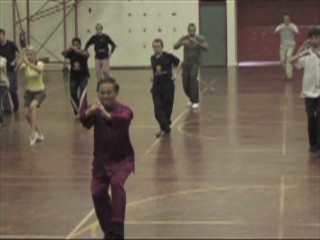
When the patterns are performed correctly, they are linked together to form sets. The four typical hand attack patterns and the four typical defences are now linked to form the set called “Lohan Asks the Way”. For convenience, this set formed from patterns is called a pattern-set, in contrast with a sequence-set which is formed from sequences.
How to Regulate the Breathing
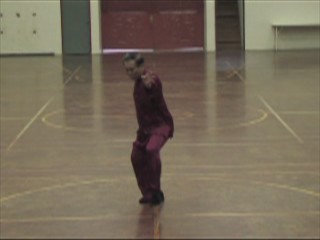
Having learnt to perform a set with picture-perfect forms, the next step is to regulate the breathing. First the forms are performed pattern by pattern, with one breath per pattern. Next a suitable number of patterns are linked to form a sequence, with one breath per sequence. You should not be panting at the end of the performance.
Completed in One Breath

Grandmaster Wong leads the class to perform just the first four patterns of the set in a sequence instead of pattern by pattern. This sequence of four patterns are performed in one breath, in an important kungfu tenet known as “yeit hei ho seng” in Cantonese or “yi qi ke cheng” in Mandarin, which means “completed in one breath”.
One Breath for One Sequence
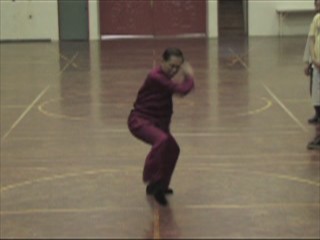
Now the number of patterns in a sequence is increased to eight or nine patterns. The sequence is still performed in one breath. All the eight or none patterns should be performed smoothly as if they were just one continuous pattern. Your performance is now faster, without being hasty. It is important that you must not be tired or panting after the performance.
Performing the Whole Set in Four Breaths
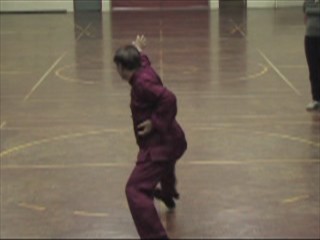
The whole set of 36 patterns is now performed in four sequences, with one breath for one sequence. Hence the whole set is now performed in just four breaths. The performance is not only fast but forceful, yet the performer is not tired or panting after the performance. This is possible when the patterns are performed in chi flow with no muscular tension.
Effective Performance Without Feeling Tired or Out of Breath
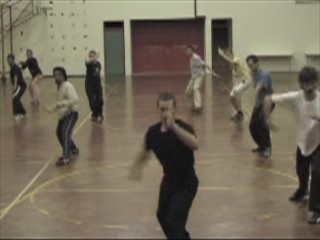
The class now performs the whole set using only four breaths. This skill of breath control is very useful in daily life. Amongst many other benefits, you can now perform physical and mental tasks effectively without feeling tired or out of breath. This skill enables our students to spar for a few hours without panting.
Lifting Sun and Moon
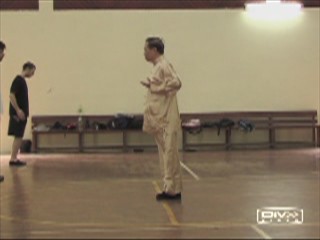
Another skill which enables you to be efficient not only in your kungfu performance but also in your daily life is called “Lifting Sun and Moon”, as shown in this video. Performed correctly it enables your chi to flow as well as increase your chi volume. This is such an important exercise that it is normally found at the beginning of every kungfu set.
One Finger Shooting Zen
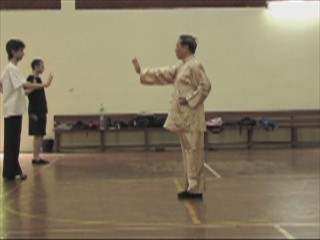
“One Finger Shooting Zen” is considered a treasure of Shaolin Wahnam. The uninitiated may not find anything special in this exercise, but the initiated can derive tremendous benefits from it. It generates energy flow, develops internal force, attains mental clarity and accomplishes spiritual expansion. Here the participants perform “One Finger Shooting Zen” in the standing upright position. When they are advanced, they perform it at the Horse-Riding Stance.
Fierce Tiger Speeds Through Valley
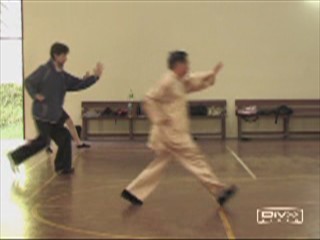
Sequence 5 is performed pattern by pattern. This Sequence is called “Fierce Tiger Speeds Through Valley”. It introduces “Continuous Cannons” in pressing attacks.
Dark Dragon Draws Water
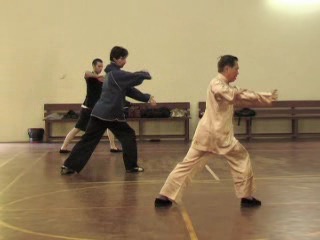
Sequence 6, which is known as “Dark Dragon Draws Water”, is performed pattern by pattern. Having picture-perfect forms is important in practicing kungfu as a martial art. Practicing the sequence pattern by pattern, amongst other benefits, ensures picture-perfect forms.
LINKS
Review of the Intensive Shaolin Kungfu Course in Sabah in March 2007
- Overview 1 : The Fundamentals
- Overview 2 : The 16 Combat Sequences
- Overview 3 : Are They Performing Kungfu Dance?
- The Basics of Shaolin Kungfu Training
- Fundamental Combat Skills
- Defeat you Hand to your Opponent, Victory you Create Yourself
- Avoiding Disadvantages and Seeking Advantages
- Basic Principles and Tactics of Combat
- Skills derived from Sparring can be Rewardingly used in Daily Life
- Some Secrets in Practicing Genuine Kungfu
-
Various Ways to Move into an Opponent
- Applying Combat Sequences in Sparring
- Linking Sequences to be More Combat Efficient
- The Secrets of Continuous Cannons
- The Mechanics of Continuation
- Marvelous Techniques Beget Marvelous Techniques
- Perfecting Forms and Developing Force
- Applying Tactics in Combat
-
Objectives of Form Training in Solo
- Being Fluent in Kicking Techniques before Applying them in Combat
- Using Tactics in Kicking Attacks and Defences
- Different Levels of Sophistication in Sparring and Fighting
- The Legacy of Uncle Righteousness: Secret of Continuous Cannons and their Counters
-
Benefiting from the Experiences and Teachings of Past Masters
- Poetic Patterns Can be Very Deadly
- Moving Back One Step when in Diffiuclt Situations
- Linking Sequences to Form a Kungfu Set
- Felling Techniques in Kungfu are Different from Judo and Wrestling
- Butterfly Palms and Hiding Flowers are Excellent in Countering Felling and Gripping Attacks
-
Let Mercy Flow from the Hands
- Benefits of Solo Set Practice — Combat Sequences 13 to 16
- From Pre-Choice Sequences to Free Sparring
- Applying Shaolin Patterns Correctly and Spontaneously in Free Sparring
- Shaolin Kungfu against Boxing and Kick-Boxing
- Shaolin Counters against Wrestling Shoots
- The Secret of Grandmaster Ho Fatt Nam
- Why Shaolin Kungfu is Technically Faster than Boxing
- Shaolin Techniques, Tactics and Strategies against Boxing
- Revealing Secrets of Past Taijiquan Masters
- Overwhelming Opponents with Just One Pattern
- Poetry and Elegance in Effective Combat
